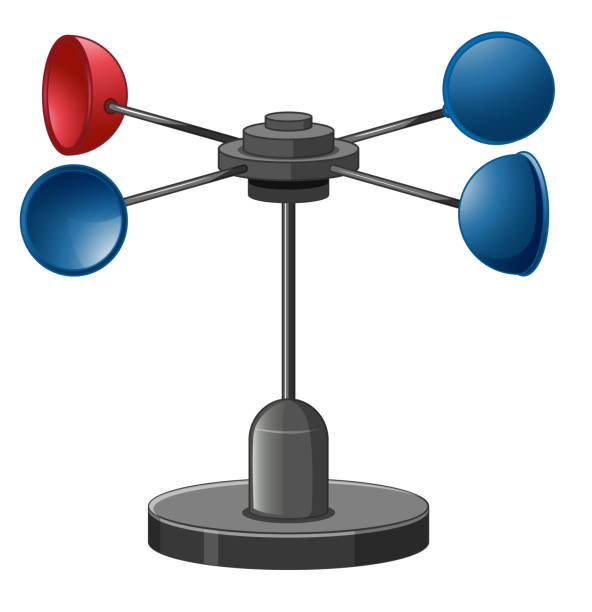Expert Tips for Adjusting Your Anemometer for Optimal Efficiency
Anemometers Introduced: Understanding Their Importance in Environmental Surveillance and Safety Steps
The duty of anemometers in environmental monitoring and precaution is often underestimated, yet their value is obvious. These tools have a lengthy background rooted in scientific questions and technical innovations, advancing to become important tools in various areas. From weather forecasting to aeronautics safety and security, anemometers play an important role in providing exact information that educates decision-making procedures and improves overall safety. Recognizing the ins and outs of anemometers reveals a world of critical understandings that are essential to our understanding of the atmosphere and the steps we take to make sure security.
History of Anemometers
The advancement of anemometers can be mapped back to the old human beings where fundamental wind measuring gadgets were very first made use of. These early wind dimension tools laid the foundation for the development of extra sophisticated anemometers with time. Among the earliest recognized anemometers was the hemispherical mug anemometer designed by Leon Battista Alberti in the 15th century. This style contained four hemispherical cups that accumulated wind energy, offering a dimension of its intensity based on the rate of turning.
Over the years, developments in innovation led to the advancement of more contemporary anemometers, including ultrasonic anemometers and laser Doppler anemometers, providing enhanced precision and effectiveness in determining wind speed and direction. The background of anemometers showcases an impressive journey of development and progress in the field of weather forecasting.
Sorts Of Anemometers
Throughout the area of weather forecasting, numerous kinds of anemometers have been developed to accurately measure wind speed and instructions. One of the most typical type is the cup anemometer, which consists of 3 or 4 mugs installed on horizontal arms that rotate with the wind. As the mugs rotate, the rate at which they turn is directly symmetrical to the wind rate. Another commonly used kind is the vane anemometer, which features a tail or fin that straightens itself with the wind instructions. This positioning allows the device to identify the wind instructions. Sonic anemometers utilize ultrasonic signals to measure wind rate and direction properly. They are frequently used in research applications as a result of their high precision. Hot-wire anemometers run based upon the concept that the cooling result of wind on a warmed wire is symmetrical to the wind speed. These anemometers are ideal for determining low wind rates with high accuracy. Each sort of anemometer has its strengths and is picked based upon the particular requirements of the tracking job available.
Applications in Meteorology
Having actually reviewed the various sorts of anemometers made use of in weather forecasting for measuring wind speed and direction, it is essential to discover their sensible applications in the area. Anemometers play an important duty in meteorology by supplying exact and real-time data on wind conditions (anemometer). Meteorologists utilize anemometers to check wind rate and instructions to anticipate climate patterns, problem warnings for serious climate occasions like typhoons, hurricanes, and tornados, and analyze weather for air travel security
In weather forecasting, anemometers aid in comprehending local and regional wind patterns, which are important for forecasting weather condition changes and identifying weather patterns. These devices are additionally used in research to examine microclimates, metropolitan warmth islands, and air contamination diffusion. Furthermore, anemometers are employed in agriculture to enhance crop management methods, such as watering and chemical application, based upon wind problems.
Significance in Aviation Safety
An integral facet of making sure air travel security depends on the careful monitoring of wind problems utilizing anemometers. Anemometers play a crucial duty in aviation by giving real-time data on wind speed and direction, helping pilots in making informed decisions throughout trip, touchdown, and take-off. Solid and unforeseeable winds can dramatically impact airplane procedures, making it essential for aeronautics authorities to rely upon exact wind measurements to make certain the security of travelers and team.

In the dynamic environment of air travel, where also small changes in wind rate and direction can have extensive impacts, anemometers stand as vital tools for promoting secure and secure flight.
Duty in Environmental Research
Exactly how do anemometers contribute to advancements in environmental study? Anemometers play a crucial function in ecological study by giving vital information on wind speed and direction. This info is important for understanding various climatic procedures, such as air pollution dispersion, weather condition patterns, and environment change. By precisely determining wind features, anemometers help scientists evaluate the motion of contaminants airborne, analyze the impact of commercial emissions, and predict the visit their website spread of pollutants in the atmosphere.


Verdict
In conclusion, anemometers have played an essential role in ecological monitoring and safety and security procedures. Recognizing the relevance of anemometers is vital for accurately gauging wind speed and instructions, which is crucial for anticipating weather condition patterns, guaranteeing secure air travel procedures, and carrying out environmental studies.
One of the earliest well-known anemometers was the hemispherical mug anemometer invented by my sources Leon Battista Alberti in the 15th century. Over the years, innovations in innovation led to the growth of even more modern anemometers, consisting of ultrasonic anemometers and laser Doppler anemometers, offering raised accuracy and efficiency in gauging wind rate and instructions. Hot-wire anemometers run based on the principle that the cooling effect of wind on a heated cord is proportional to the wind rate. Meteorologists use anemometers to monitor wind rate and instructions to forecast weather condition patterns, concern warnings for serious weather events like storms, hurricanes, and tornadoes, and examine atmospheric conditions for air travel safety and security.
Understanding the importance of anemometers is important for precisely determining wind rate and direction, which is important for anticipating weather condition patterns, ensuring safe aviation operations, and conducting environmental research studies. (anemometer)